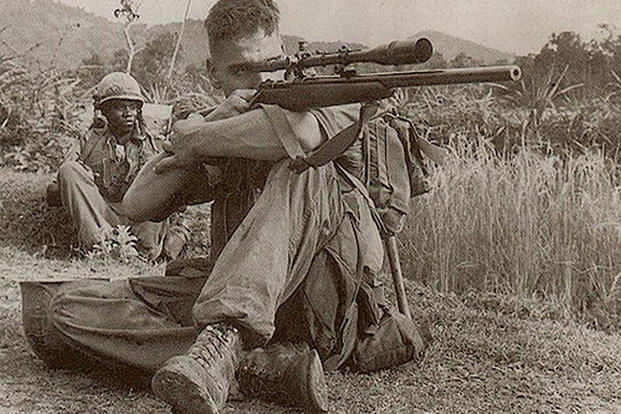The Legend of the Winchester Model 70
The Legend of the Winchester Model 70
Few things in life are truly “iconic.” The most famous rifle from the most famous manufacturer – the Winchester Model 70 – sheds all doubt.
The Legend of the Winchester Model 70 The Winchester 1873 is undoubtedly the most famous production rifle of all time. As it reached the twilight of its “career” in the early 20th century, it was quickly replaced by another rifle built with the same quality. The favorite firearm of Carlos Hathcock, the greatest Marine Corps sniper ever, and Jack O’Connor, one of the most famous hunters and outdoor writers in the last 200 years, the Winchester Model 70 lacks in neither gusto nor validation.
Origins
Like most wars, World War l precipitated innovation in firearms technology. For the first time, warring nations carried bolt-action rifles onto the battlefield. Impressed by their standard-issue Springfields, doughboys returned home intending to ditch their lower velocity lever-action hunting rifles in favor of bolt-action sporters.

Winchester Model 70
Immediately following the war, no production bolt-action hunting rifle existed. Surplus Springfield rifles were capable of performance. But their clunky stocks and heavy triggers were far from a showpiece or pleasurable to shoot. Firearms manufacturers raced to meet the newfound demand. Consequently bolt guns quickly became the hot new hunting gear of the day.
In 1920 Savage won the race introducing the Model 1920 Hi-Power. Preferring to take their time creating the best new design instead of the first new design, Winchester declined to join the early race. It instead released the Winchester Model 54 five years later.
The Model 54 took the market by storm. Hobbyists had anxiously waited for Winchester to release their response to the bolt-action demand. And the sleek new rifle did not disappoint. While the Model 54 was considered a vast success, certain design elements, including a heavy trigger, were improved, and the updated version garnered a new name – Model 70.
Many called the new design perfect. The improved trigger paired with the Model 54’s balance and buttery-smooth action provided hunters and hobby shooters with an off-the-shelf rifle capable of tack-driving accuracy on a lightweight platform in an attractive package. In 1952, Winchester self-proclaimed the Model 70 as “The Rifleman’s Rifle,” and the name stuck.
Changes
While order numbers were never a problem, efficient production was. Winchester was a company that had built its reputation on quality and the construction of premium firearms through hand-made processes rather than mass-produced methods. Into the early 1960’s, lower-cost production bolt actions began taking market share. Most notable was the Remington 700. Realizing a need to lower their price point to compete, Winchester made changes to the Model 70’s original design in 1964.

This changed several of the rifle’s components. Metal parts were forged instead of machined by hand. As was barrel rifling, which had been originally hand drilled. The original extractor was replaced. And the controlled feed action was also replaced with a more economical push feed action.
Additionally, the checkering was machine-stamped instead of being cut by the hands of skilled craftsmen. The changes received mixed reviews as purists complained of a reduction in quality. On the other hand, the common man praised finally being able to afford a fine rifle.
Legacy
Over the years, improvements in manufacturing have helped maintain the lower price point. Those same improvements have kept quality intact too.The contemporary versions offer a variety of style and calibers. They give hunters, sport shooters, and law enforcement a litany of choices to find the perfect setup for their intended use.
Very few items have remained virtually unchanged over the last 100 years while maintaining demand in the marketplace. The Model 70 is still regarded as a market leader in production, build quality, sales, and user experience as we inch closer to its centennial anniversary. That’s with nearly the same design displayed in the pre-World War ll era.
In 1999, Shooting Times named the Winchester Model 70 the “Bolt-Action Rifle of the Century.” As a top-tier performer in the woods, on the battlefield, and on the streets for law enforcement, the Model 70 is as deserving as ever of the title for both its flexibility and consistency. Years after its initial release, we may have forgotten that the Winchester Model 70’s nickname was a clever marketing campaign. Yet we will always remember “The Rifleman’s Rifle” as a member in the Pantheon of bolt-actions.










